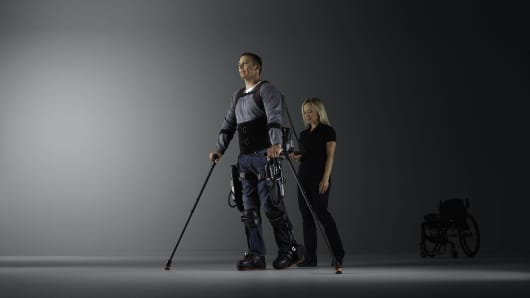When Dale Messenger was left paralyzed following an incident while he was serving in the British Army, he thought he would never walk again. A gunshot wound caused a major spinal cord injury and left him wheel chair-bound -- until nearly 3 years later.
But, Messenger told CNBC: "I was adamant I would walk again."
And now he is, with the help of a wearable bionic suit known as Ekso.
Through a number of different sensors and motors, the device, made by U.S.-based Ekso Bionics, helps people walk via its mechanical legs. If users move their leg slightly forward, the suit will give mechanical assistance to help the person take a step by sensing the movement.
"It's essentially a wearable robot," Nathan Harding, co-founder and CEO of Ekso Bionics, told CNBC.
The bionic suit, which was launched in 2012, is just one example of the increasing use of robotics in the medical world.
ReWalk is another company that has bought a bionic exoskeleton to the market, while a number of universities and medical firms have developed bionic prosthetic limbs.










